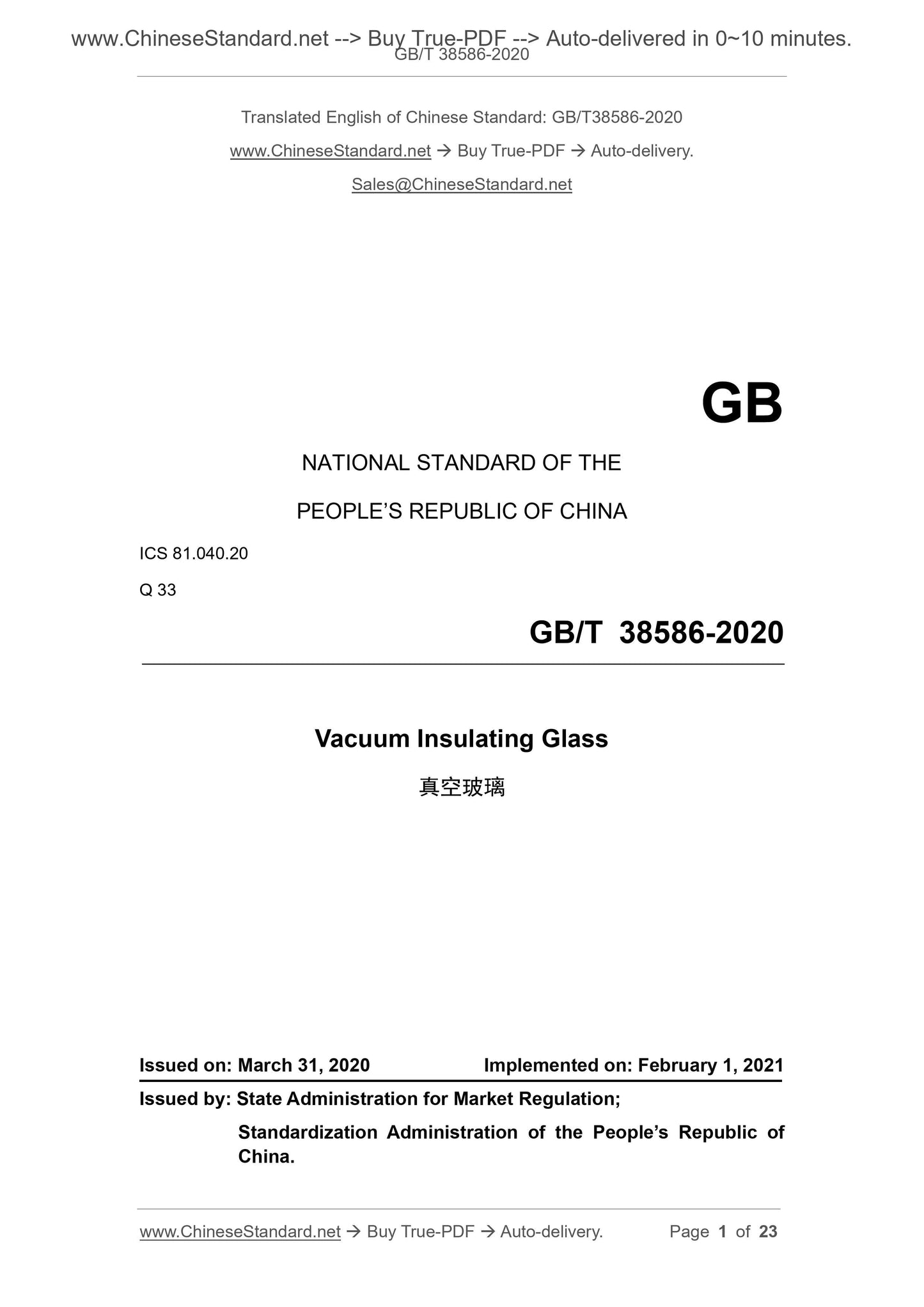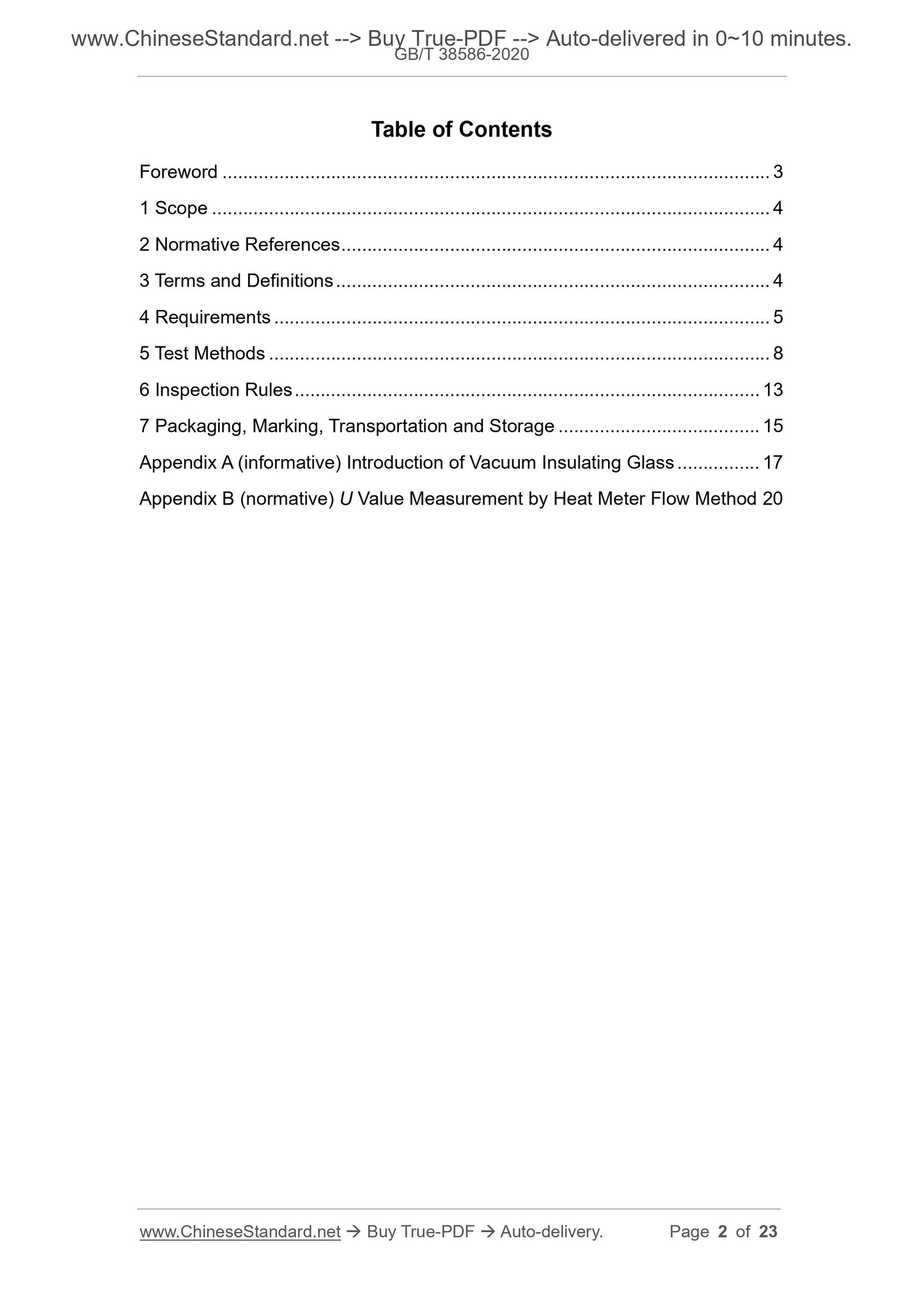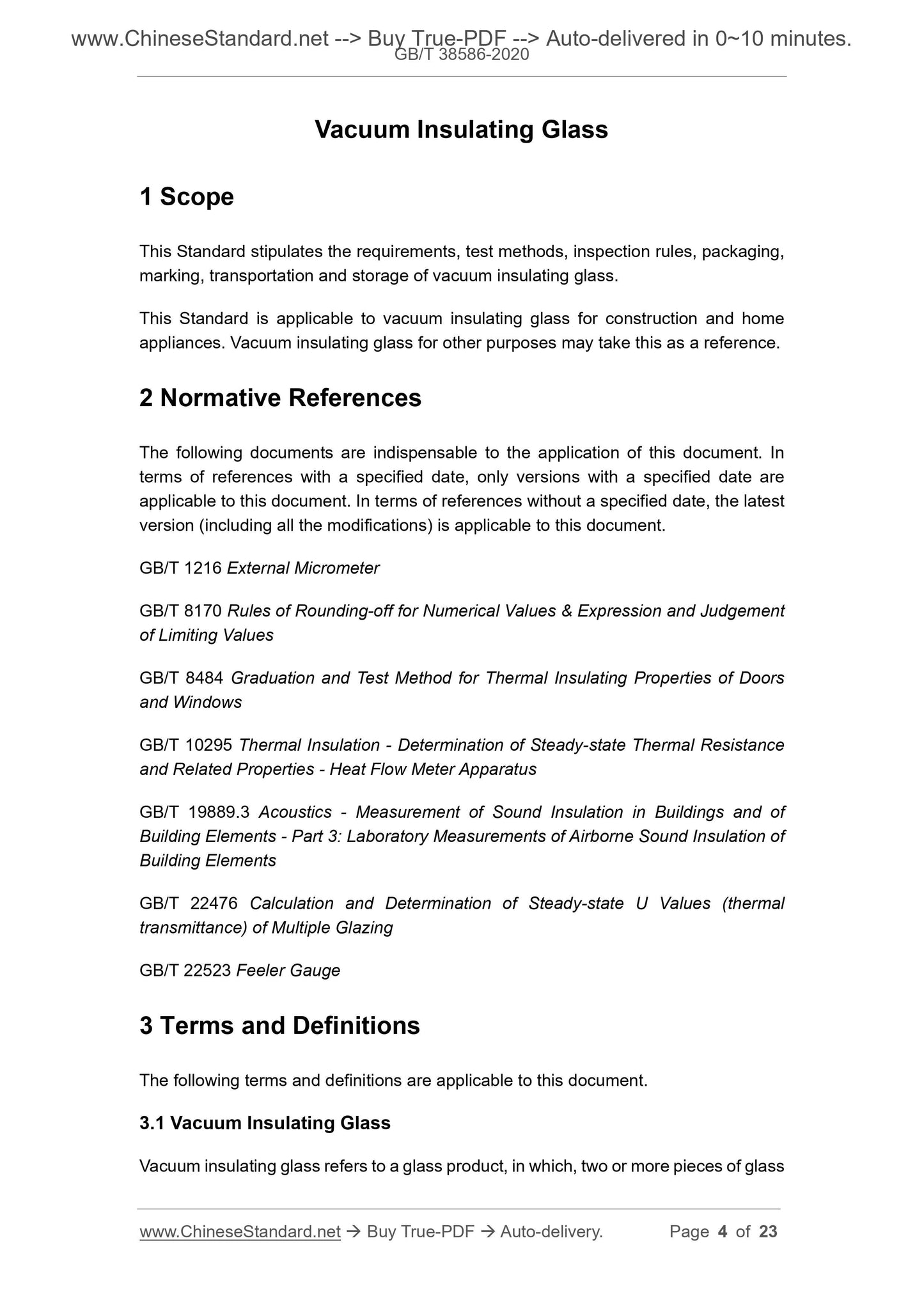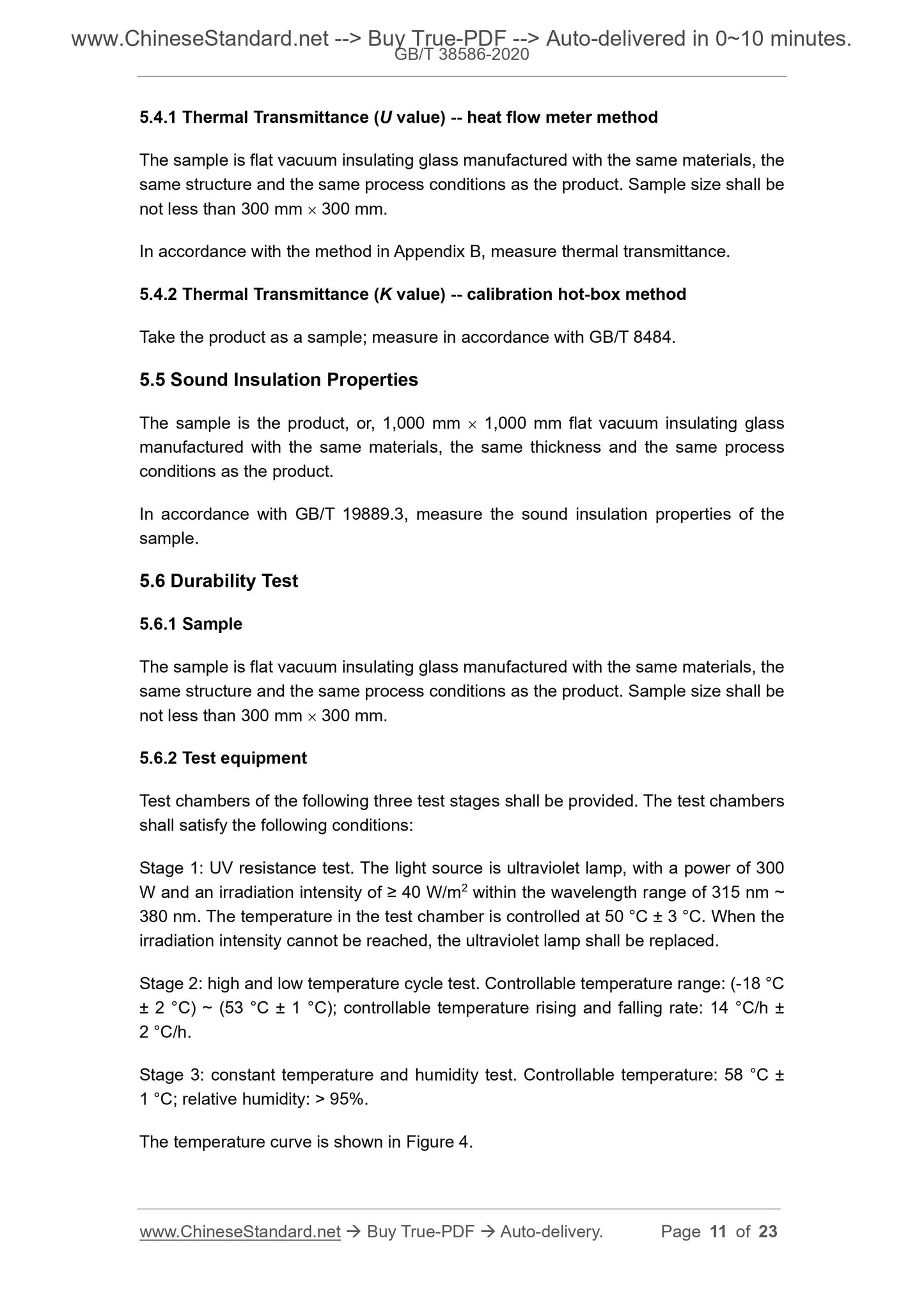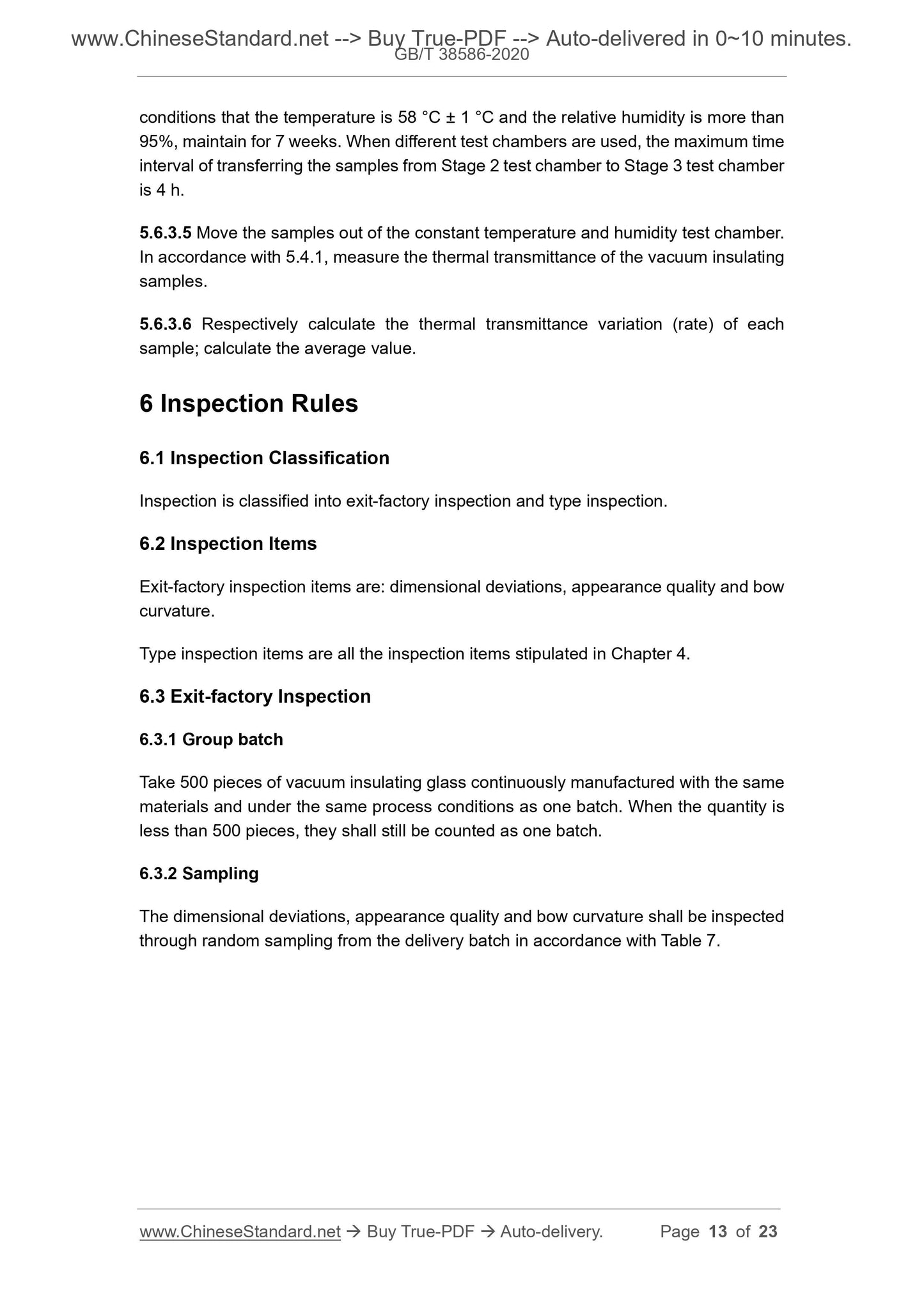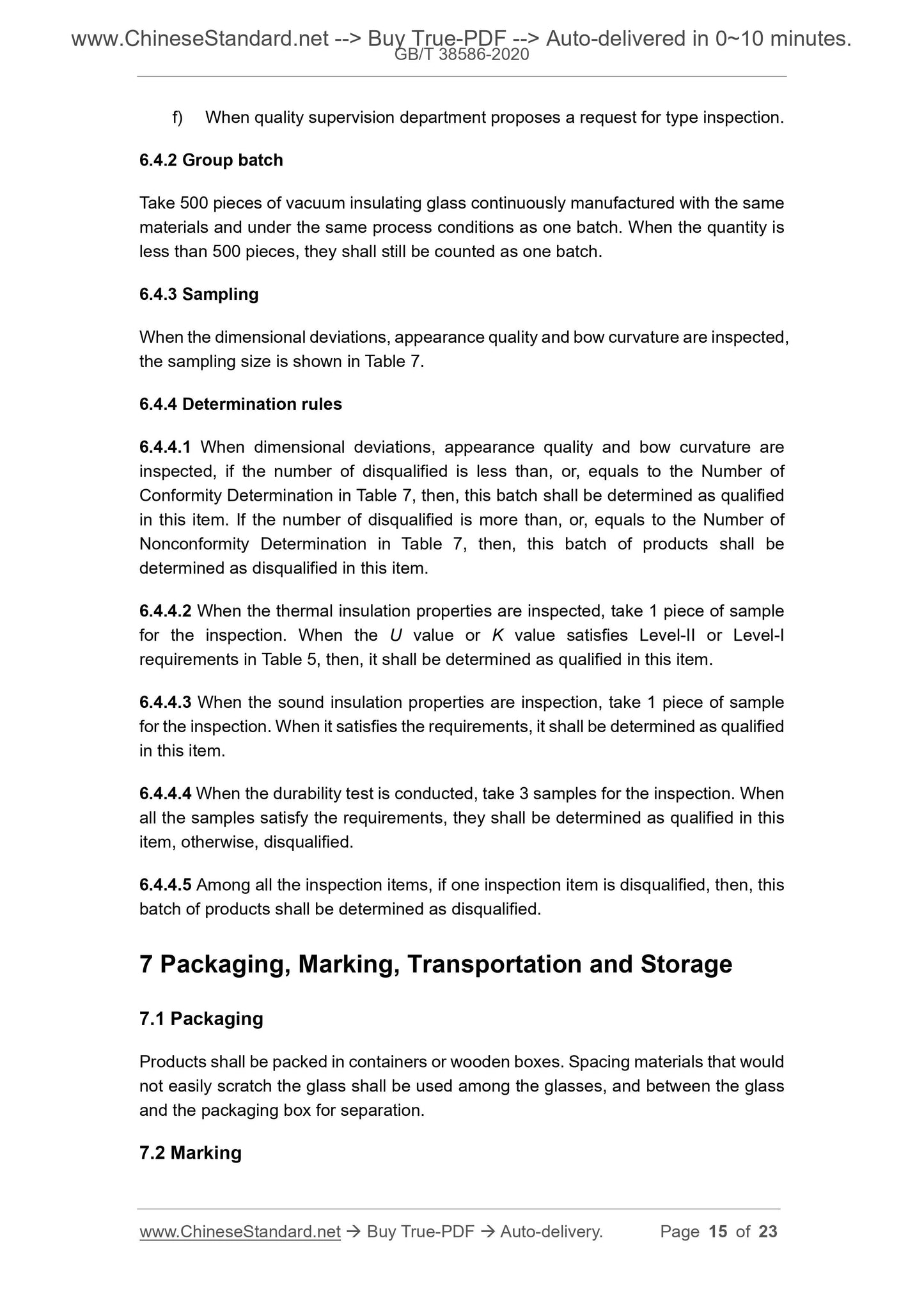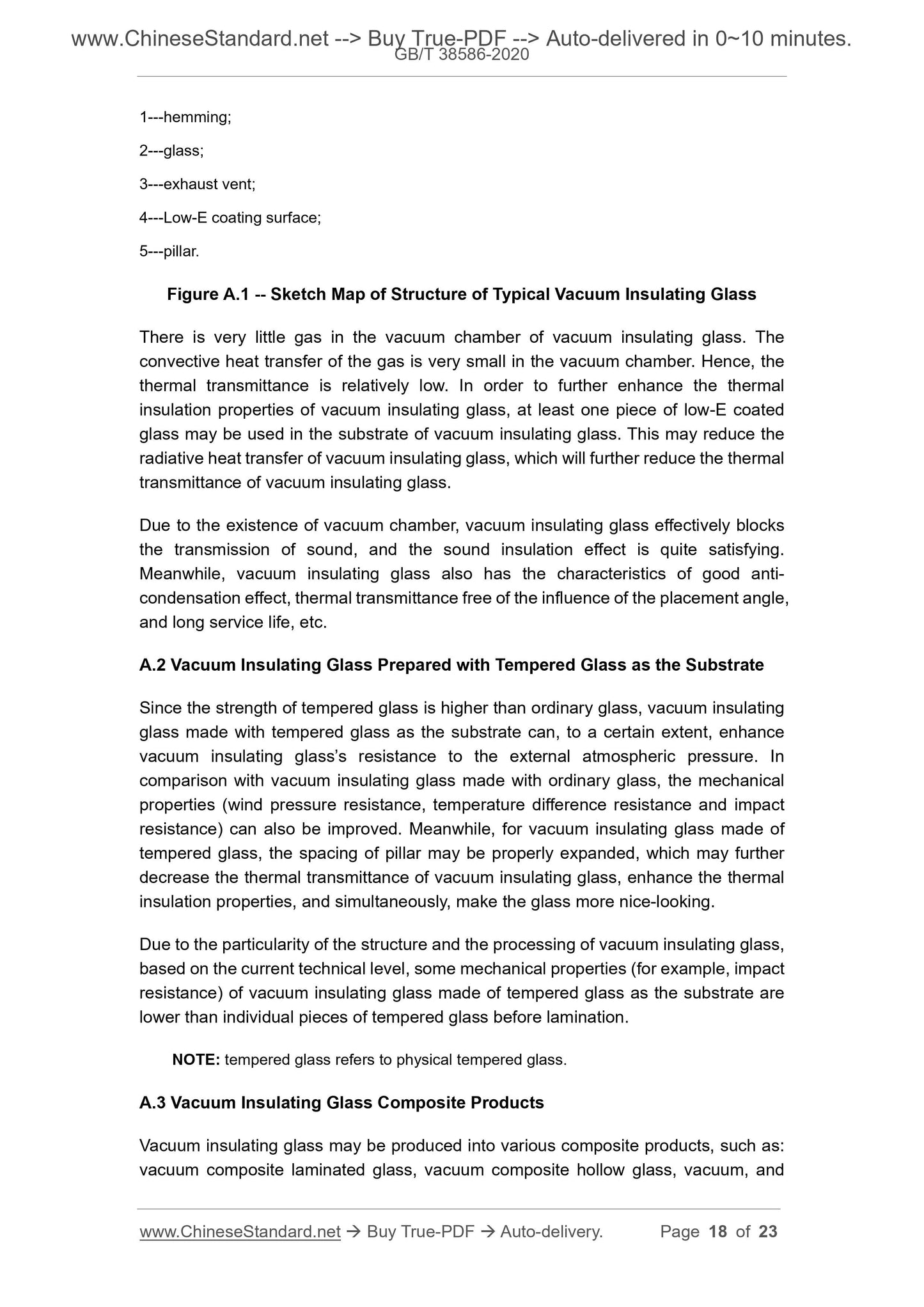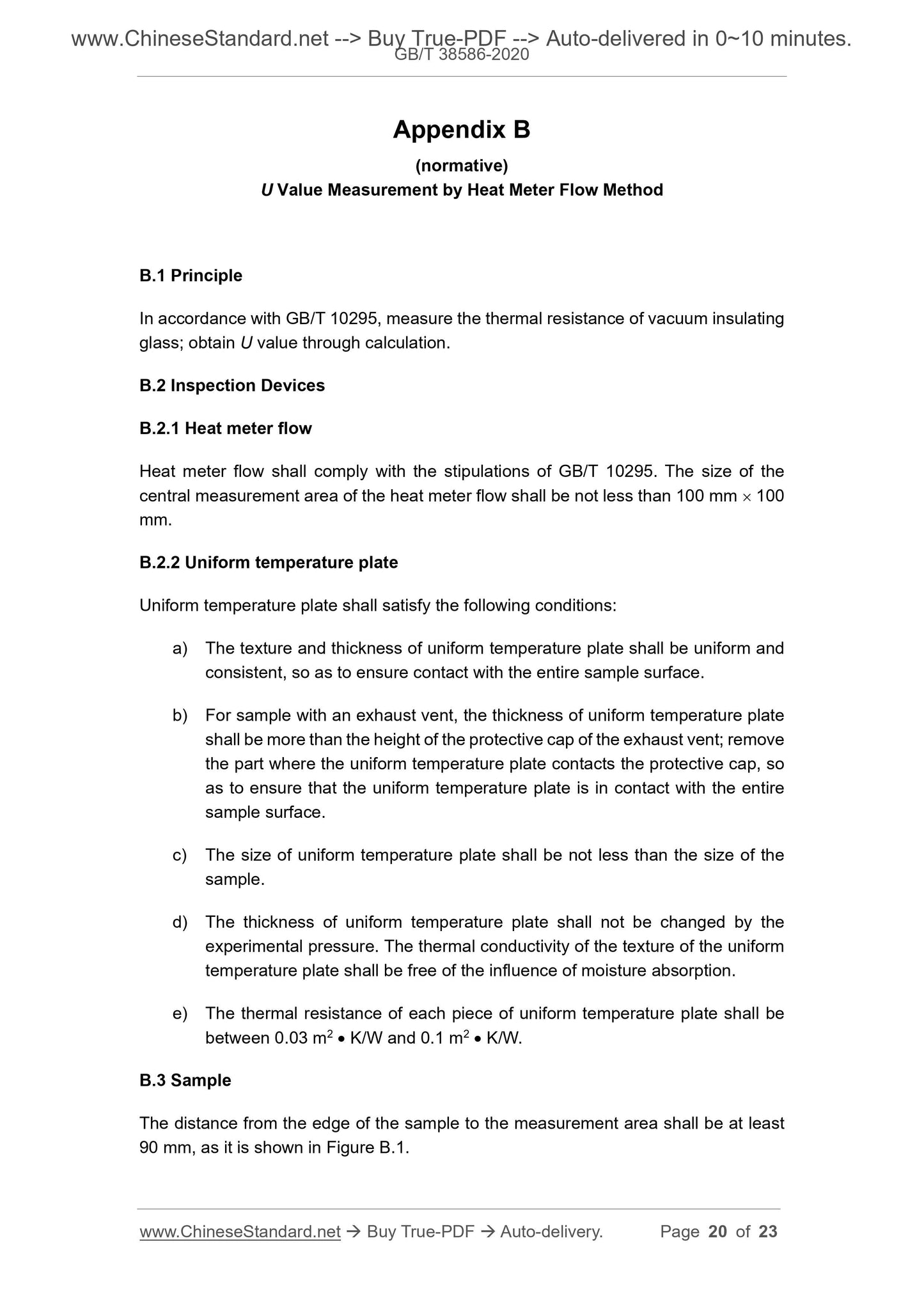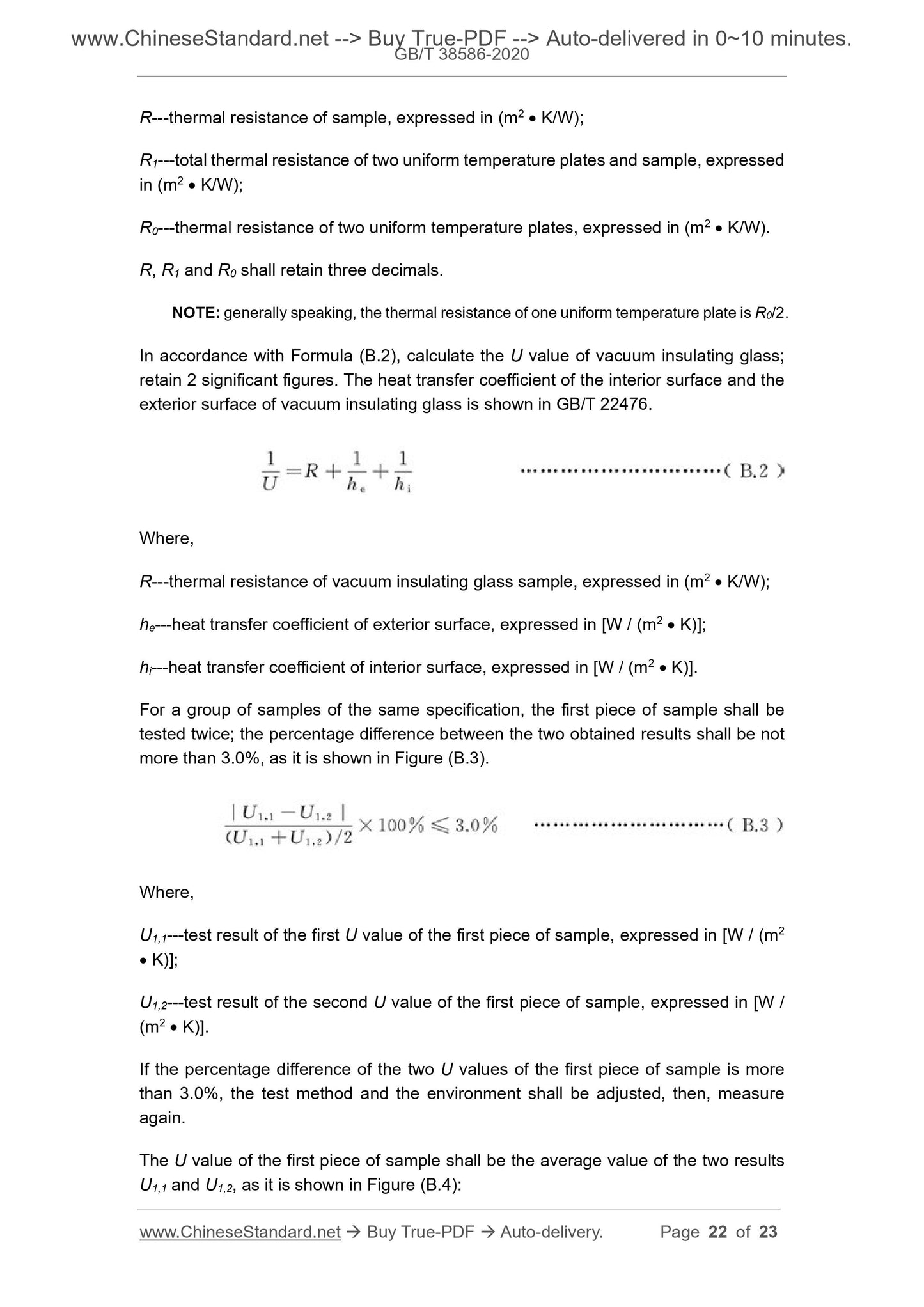1
/
of
9
www.ChineseStandard.us -- Field Test Asia Pte. Ltd.
GB/T 38586-2020 English PDF (GB/T38586-2020)
GB/T 38586-2020 English PDF (GB/T38586-2020)
Regular price
$205.00
Regular price
Sale price
$205.00
Unit price
/
per
Shipping calculated at checkout.
Couldn't load pickup availability
GB/T 38586-2020: Vacuum Insulating Glass
Delivery: 9 seconds. Download (and Email) true-PDF + Invoice.Get Quotation: Click GB/T 38586-2020 (Self-service in 1-minute)
Newer / historical versions: GB/T 38586-2020
Preview True-PDF
Scope
This Standard stipulates the requirements, test methods, inspection rules, packaging,marking, transportation and storage of vacuum insulating glass.
This Standard is applicable to vacuum insulating glass for construction and home
appliances. Vacuum insulating glass for other purposes may take this as a reference.
Basic Data
| Standard ID | GB/T 38586-2020 (GB/T38586-2020) |
| Description (Translated English) | Vacuum Insulating Glass |
| Sector / Industry | National Standard (Recommended) |
| Classification of Chinese Standard | Q33 |
| Classification of International Standard | 81.040.20 |
| Word Count Estimation | 15,148 |
| Date of Issue | 2020-03-31 |
| Date of Implementation | 2021-02-01 |
| Quoted Standard | GB/T 1216; GB/T 8170; GB/T 8484; GB/T 10295; GB/T 19889.3; GB/T 22476; GB/T 22523 |
| Issuing agency(ies) | State Administration for Market Regulation, China National Standardization Administration |
| Summary | This standard specifies the requirements, test methods, inspection rules, packaging, marking, transportation and storage of vacuum glass. This standard applies to vacuum glass for construction and home appliances, and vacuum glass for other purposes can be used as a reference. |
Share
